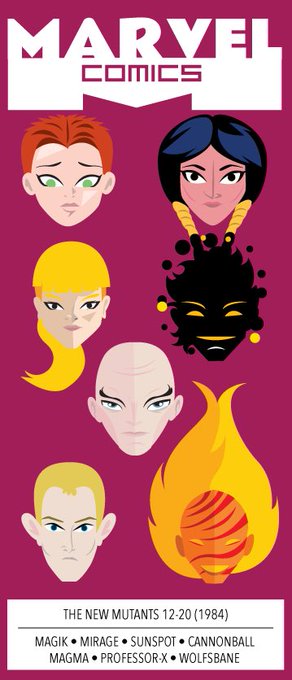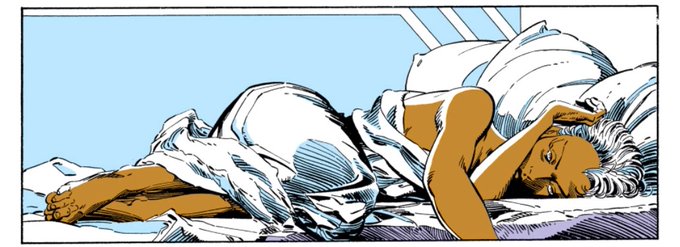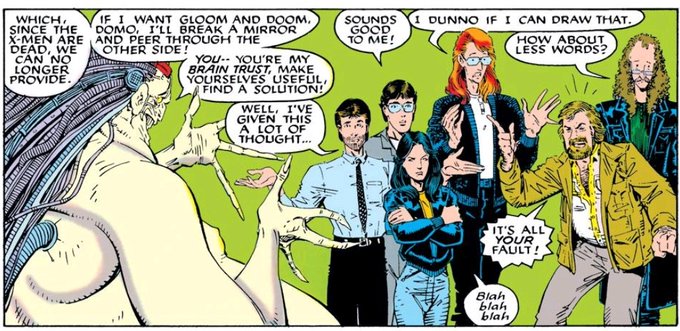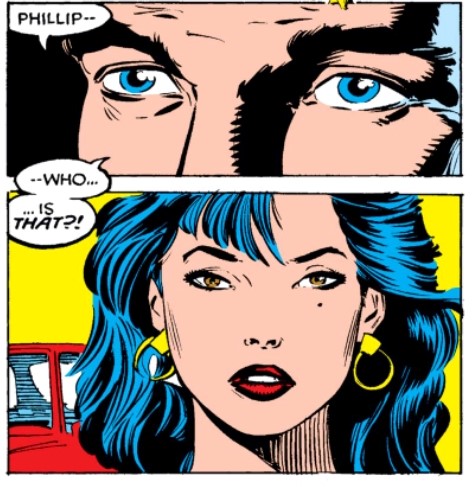ClaremontのTwitterイラスト検索結果。 923 件中 39ページ目
Day 6 of my X-men line up chronology quarantine personal project! This is my fav X-men moment, the 80s Romita JR punk X-men #NewMutants #xmen #marvelcomics #fanart #ChrisClaremont #bobmcleod #romitajr #paulsmith #wolverine #marvel
Claremont treated the X-Men as an ensemble, and, though he clearly favored Storm, even she would pass in and out of issues without a consistent central focus. In contrast, when Claremont left, Wolverine dominated all issues and the group dynamic may have lost its balance. 3/5
HAW! Watch Chris Claremont turn John Byrne's minor error into a clever offscreen action twist and reversal in X-Men #133!
#MARVELMETHOD FOREVER!
Through all of this, Claremont ties together decades of Betsy continuity across multiple authors and franchises to form a cohesive vision of a traumatized person who hated feeling weak and therefore sought power. 8/9
Claremont did not always succeed at escaping stereotype himself (see accents as one example of this), but under his watch the characters became progressively more independent from type, often undermining it altogether. 3/4
Here, Claremont picked her up and wove her into X-Men through an attack by the Marauder Malice and a subsequent roster position as the safest option for Alison in the wake of the Mutant Massacre. 4/7
In 4 Days...
What did Moira do to Baby Mags? This, and a whole lot more, on... From Claremont to Claremont: An X-Men Podcast, Episode 2!
#fctcxmen #fromclaremonttoclaremont #xmen #jimlee #chrisclaremont
Claremont’s roster has various characters out for certain issues or even for extensive runs. This creates gaps in the lineup, allowing Claremont to try-out, debut or cultivate other members, a process that has resulted in multiple enduring characters taking off. 4/5
While the impact of death in comics has been much discussed, long-term injury and rehabilitation has not, despite having similar effects on character, plot and setting. Predictably, this is something Claremont often does very well. 1/5 #xmen
The satirical aspect is established through several references to Marvel comics production as well as the presence, on-page, of the X-Men creative teams, such as Claremont, the Simonsons, Art Adams and Ann Nocenti in several instances. 3/6
Claremont uses the Morlocks to create a mutant class hierarchy, thus allowing X-Men an opportunity to speak to issues of class, privilege, and visibility in a way that the traditional superhero narrative (with its casual portrayals of wealth) often avoid. 1/6 #xmen
Her character arc then becomes a story of self-definition in the absence of these external forces. By the end of her time in UXM, she is lost completely and utterly, but finds herself again in Claremont’s Excalibur, reborn (because Phoenix) as a confident and assertive hero. 4/4
One of the more direct commentaries on masculinity in the Claremont run comes in UXM 183. Logan takes issue with Piotr’s handling of his break-up with Kitty and decides to teach the young man a lesson through the time-honoured medium of bar-fight. 1/5 #xmen
When plans for the character were cancelled, Claremont absorbed him into X-Men, using his purity to provide a moral compass for the team in the absence of Nightcrawler, while integrating Longshot’s villains, Mojo and Spiral into prominent positions in the X-Universe. 3/6
When people talk about the X-Men, some minds go to Claremont, others to Stan or Jim Lee, or Morrison. Mine immediately goes to @1PeterMilligan and @AllredMD's X-Force/X-Statix. People, let me tell you about the greatest mutant team ever assembled...
Callisto is one of the most gender-deviant characters in the entirety of Claremont’s run, to such a degree in fact that later authors (and even Wikipedia) failed to grasp Claremont’s complex treatment of the character’s relationship to her gender in a notable story. 1/8 #XMEN

































